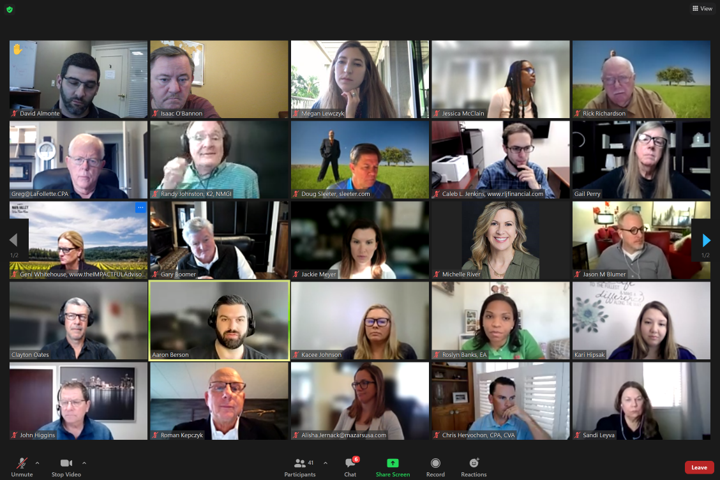In the competitive world of accounting and advisory services, offering Client Accounting Services (CAS) or Client Accounting Advisory Services (CAAS) can set firms apart and strengthen client relationships.
Here are some marketing tips for CAS services firms, along with an example.
The 5 P’s
The key to successfully marketing these services lies in understanding and implementing the 5 Ps of marketing: Product, Price, Promotion, Place, and People. This comprehensive approach ensures that you can communicate the benefits of your services, attract the right clients, and sustain long-term growth. Here’s how.
Product
- Define Your Services Clearly: Detail the specific CAS/CAAS services you offer, such as bookkeeping, payroll, financial reporting, and advisory services.
- Tailor Services to Client Needs: Customize your offerings to meet the unique needs of different client segments, e.g., small businesses, mid-sized companies, specific industries.
- Showcase Technology Integration: Highlight how you leverage technology to enhance service delivery and client experience, e.g., cloud accounting, AI-driven analytics, etc.
- Emphasize Value-Added Services: Promote advisory services that go beyond basic accounting, such as financial planning, budgeting, and strategic advice.
Price
- Transparent Pricing Models: Offer clear and transparent pricing structures, whether it’s hourly, fixed-fee, or value-based pricing.
- Flexible Packages: Provide tiered service packages to cater to different budgets and needs, from basic to premium services.
- Demonstrate ROI: Communicate the value and cost savings your services provide, such as improved financial management, compliance, and strategic insights.
- Special Offers: Consider introductory offers or discounts for new clients to entice them to try your services.
Promotion
- Educational Content: Create and share valuable content (blogs, whitepapers, webinars) that educate potential clients about the benefits of your practice.
- Case Studies and Testimonials: Use client success stories and testimonials to build credibility and showcase real-world benefits.
- Social Media Presence: Actively engage on social media platforms, sharing insights, industry news, and success stories.
- Partnerships and Referrals: Build relationships with other professionals, e.g., lawyers and business consultants, who can refer clients to you.
- Email Marketing: Use targeted email campaigns to keep prospects and clients informed about your services and industry trends.
Place
- Online Accessibility: Ensure your services are easily accessible online through a user-friendly website and client portal.
- Local Presence: If applicable, maintain a local office presence to cater to clients who prefer face-to-face interactions.
- Networking: Attend industry conferences, trade shows, and local business events to network and promote your services.
- Virtual Services: Emphasize the convenience of virtual meetings and remote services, especially for clients outside your immediate geographic area.
- Distribution Channels: Leverage various channels, e.g., direct sales, online platforms and partnerships, to reach potential clients.
People
- Skilled Team: Highlight the expertise and credentials of your team members, including ongoing professional development and certifications.
- Client-Centric Approach: Train your staff to prioritize client satisfaction and build strong, personalized relationships.
- Responsive Support: Ensure your team is accessible and responsive to client inquiries and needs.
- Thought Leadership: Position your team as thought leaders through speaking engagements, publications, and active participation in industry groups.
- Client Feedback: Regularly seek and act on feedback to improve your services and client experience.
Hypothetical Case Study: Implementing the Marketing Model
Advisor Profile: Jane Smith, a seasoned accounting advisor, specializes in providing accounting and financial advisory services to small and mid-sized businesses. She recently expanded her offerings to include Client Accounting Services (CAS). To effectively market these new services, Jane follows the strategies outlined in the 5 Ps of marketing.
Product: Jane defined her services clearly, offering bookkeeping, payroll processing, financial reporting, tax preparation, and strategic financial planning. She also highlighted her use of cloud accounting technology to enhance service delivery.
Price: She adopted a tiered pricing model to cater to different client segments. For instance, a local startup chose the Basic Tier at $500 per month, including bookkeeping and monthly financial statements. Meanwhile, a growing mid-sized business opted for the Premium Tier at $2,000 per month to benefit from strategic financial planning and cash flow management.
Promotion: To promote her new services, Jane developed a series of educational blog posts and webinars on the benefits of working with a CAS practice. She also shared client success stories on social media and ran targeted email marketing campaigns to reach potential clients. Her efforts were complemented by partnerships with local business consultants and lawyers who referred clients to her.
Place: Jane ensured her services were easily accessible online through a user-friendly website and client portal. She also maintained a local office for clients who preferred face-to-face interactions and attended industry conferences to network and promote her services.
People: Jane emphasized her team’s expertise by highlighting their credentials and ongoing professional development. She trained her staff to prioritize client satisfaction and actively sought client feedback to continuously improve her services.
Outcome: One of Jane’s clients, a mid-sized construction company, initially signed up for the Standard Tier at $1,000 per month. After six months, impressed by the detailed quarterly financial reviews and budgeting assistance, the company upgraded to the Premium Tier. With Jane’s strategic financial planning and CFO advisory services, the client saw significant improvements in cash flow management and overall financial health.
Through a strategic application of the 5 Ps of marketing and a flexible tiered pricing model, you can see how Jane successfully expanded her client base and strengthened her relationships with existing clients.
If you’re looking to increase your CAS practice client base and revenue, consider using the 5-P marketing model in your strategy.
Thanks for reading CPA Practice Advisor!
Subscribe Already registered? Log In
Need more information? Read the FAQs
Tags: Advisory, CAS, Firm Management





